When we planned this adventure we decided that in general we were going to drive south, we’d stick to the west coast to take advantage of both mountains and beaches, and we’d definitely spend some time in Patagonia, but we never specifically had a destination. Our intention was to enjoy the journey and not focus on the destination. However, we knew that technically the southern end of the Pan-American Highway is in Ushuaia, Argentina, and that Tierra del Fuego was beautiful, so we had in the back of our minds that it would be awesome to go all the way to the end of the road. At one point we weren’t sure we’d make it that far south. The endless washboard roads have been taking their toll on the van and on our nerves and we considered just stopping somewhere nice to hang out for a while instead of pushing further south. But we kept moving on. When we finally pulled into Ushuaia, just five days shy of one year on the road, a fiercely cold wind was blowing the rain sideways and the world was gray, but we couldn’t stop grinning from ear to ear. We had made it all the way south. And it was a fantastic journey.
Our Tierra del Fuego adventures started with a ferry crossing of the Straight of Magellan. The ferry company is remarkably well organized and efficient and the crossing was quick and easy. Before we knew it we were gliding down the highway into the pampas. For those unfamiliar with the term, the pampas are the endless grassy steppes that cover southern Argentina and the northern half of Tierra del Fuego. They’re generally flat, primarily covered with yellow-brown grass and low spiky shrubs, filled with guanacos and rheas, and subjected to notoriously fierce winds that blow almost constantly. In can feel like a harsh and desolate environment, but in their own way the pampas can be very beautiful.
Before long the nice paved highway gave way to dirt, although it was one of the smoothest dirt roads we have driven. Our first stop was at the small park that protected a tiny colony of King Penguins, the only one known outside of Antarctica. We were amazed that they looked just like the stereotypical penguins that we had in mind. King Penguins are just a little smaller than the iconic Emperor Penguins, but look just like them. They have the sleek black coats and pure white fronts, with black heads and bright yellow-orange spots, and they walk with that adorable waddle and make cute quack-squawk noises. The only thing that seemed out of place was the lack of ice. We’re used to seeing photos and footage of penguins surrounded by ice, but here there was only grass, dirt, water, and sand. This colony is quite small and when we were there only a few dozen breeding pairs were hanging out on the shore, but we did get to see several large chicks covered in fluffy brown coats over their layered fat rolls.
Based on the recommendation of overlanding friends we decided to drive to the end of the road on the Chilean side of Tierra del Fuego before heading further south on the Argentinean side. This was an amazing drive – we started out in the pampas, then slowly the trees filled in, followed by rolling hills, then we were driving up and down passes and along rivers and bogs, and finally we came over a higher pass and got a commanding view of snow-capped mountains – the southern fingers of the Andes. Chile plans to eventually connect this road to Ushuaia, but at this point it passes one small army outpost and ends at a beautiful fjord that is one of the most remote places that we have been on this journey.

Tierra del Fuego is full of history, much of it wild and strange. We randomly came across this huge old mining contraption just rusting away on the side of the road.
It was here, on a section of switchbacks, that Chimera decided that we hadn’t been giving her enough attention. The section of coolant hose that Tim had replaced in Ecuador to address overheating problems gave up and spewed out enough coolant that the warning light on the dash began to flash. Tim was able to quickly diagnose the problem, but was a little concerned when he pulled out the bin of spare parts to find no good replacement for the hose, which was now shredding to bits. Luckily we had some amazing silicone tape and were able to wrap a layer along nearly the entire length of the tube. While Tim was reinstalling the repaired tube, some Argentinean tourists pulled up with a flat tire from the other car in their caravan that was several kilometers away. Corey made quick work of replacing the valve stem and putting a plug in the puncture to send them on their way. A quick refill and bleeding of Chimera’s coolant and we were ready to hit the road again.
Heading over to the Argentinean side of Tierra del Fuego involved driving across a river that demarcated the border. The nice military man at the small border station told us that there used to be a bridge there but it had washed away long ago in a flood and was never rebuilt. No matter, there was very little traffic on that road and it was only open during the summer months anyway, when the river ran low. As soon as we had our paperwork and headed down the road we noticed a significant change from the Chilean side. The scenery was exactly the same, but the road had gone to hell. We gritted our teeth and settled in for a long bumpy drive down the washboards until a few hours later we hit pavement again. It started raining more than 100km north of Ushuaia, so we didn’t get much of a view of the mountains we were passing through. By the time we got to the southernmost city in the world and the end of the Pan-American Highway the winds were howling and the skies were a dark grey, but we were still elated. We had made it to the end of the road.

Crossing the border into Argentina involved driving across this shallow river. Photo by Corey Axtell.
The next day offered sunshine, which helped to dry out some of the puddles and allowed us to take in the scenery at the end of the world, although the wind was howling even stronger and felt like it was blowing straight off of the Antarctic ice caps. We bundled up and explored the beautiful landscapes of Parque Nacional Tierra del Fuego. The park was quite lovely, but we were even more enchanted by the adorable little Post Office at the end of the world. This major tourist attraction is no more than a little shack sticking out on a pier, but it’s full of character and charm, including its longtime main employee who sports an incredible mustache and for a small fee will stamp your passport with a picture of himself.
The true southern end of the road came the next day when we drove to the southeast of Ushuaia on a well-maintained dirt road that wound through the gorgeous land of several large estancias (ranches). It was an unusually calm and warm day, perfect for a lazy afternoon on the beach. After a few hours of driving we came across a lovely little rocky cove and decided that was it, this would be our southernmost point on the journey. We checked in on the GPS and saw that we had made it to 54.9° S. It turns out that this rocky beach also just so happen to offer the best skipping stones that we had ever seen, as we have keen eyes for skippers. The beach was filled with perfectly flat, mostly round rocks, ranging in size from about a quarter to a frisbee, and the eerily calm weather meant that the water was glassy calm. We were thrilled and skipped so many rocks that we nearly threw our shoulders out.

Where do you find the most amazing skipping rocks and the glassiest water? Only at the end of the road.
We were so excited about the amazing skipping stones that we shot this video so we could share the awesomeness with the rest of the world:
After a few hours of skipping rocks, picnicking on the beach, and taking in the view and the enormity of the fact that we had made it to the end of the road, it was time to go. This was literally a major turning point for us. For the first time on our journey we turned around and headed north.

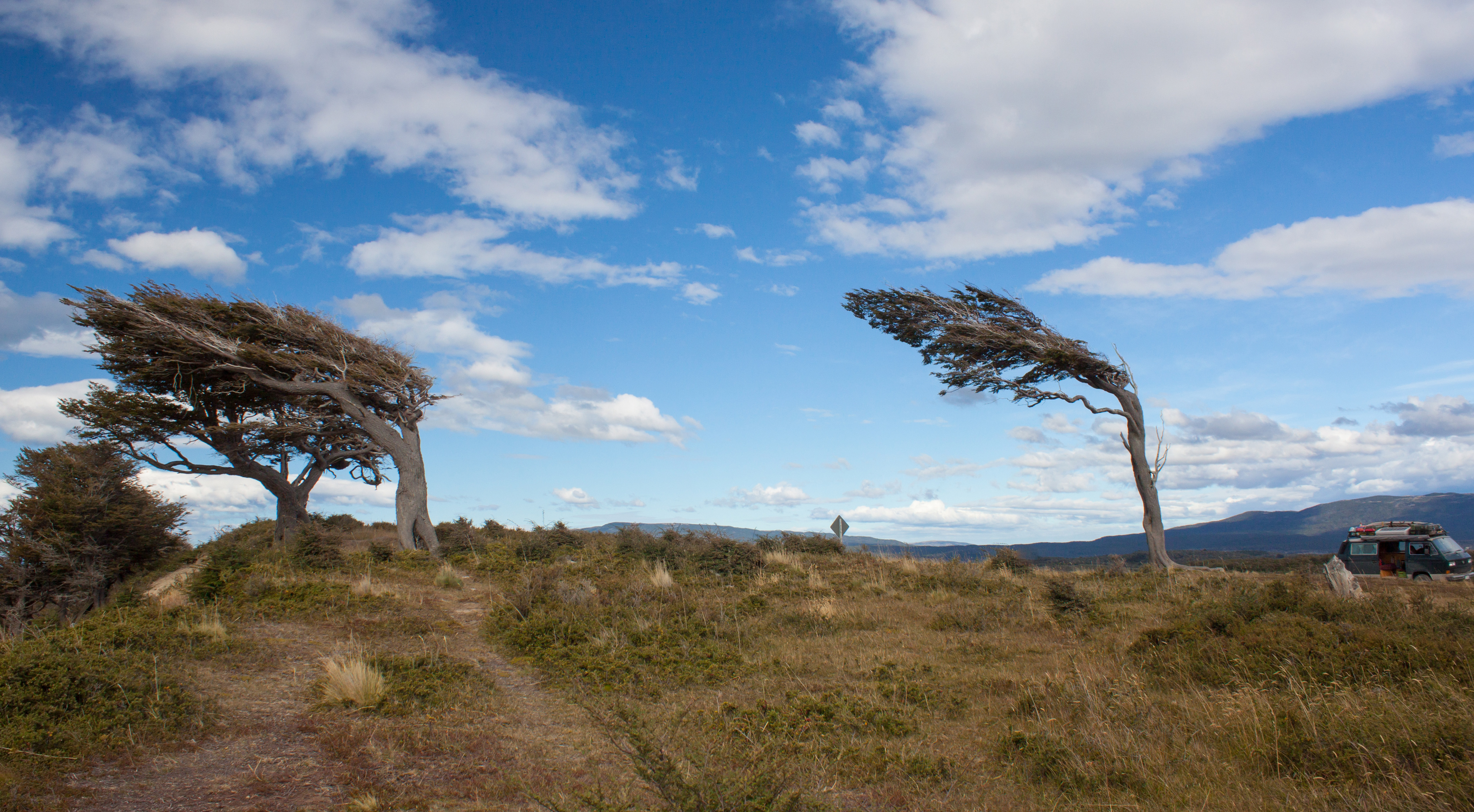








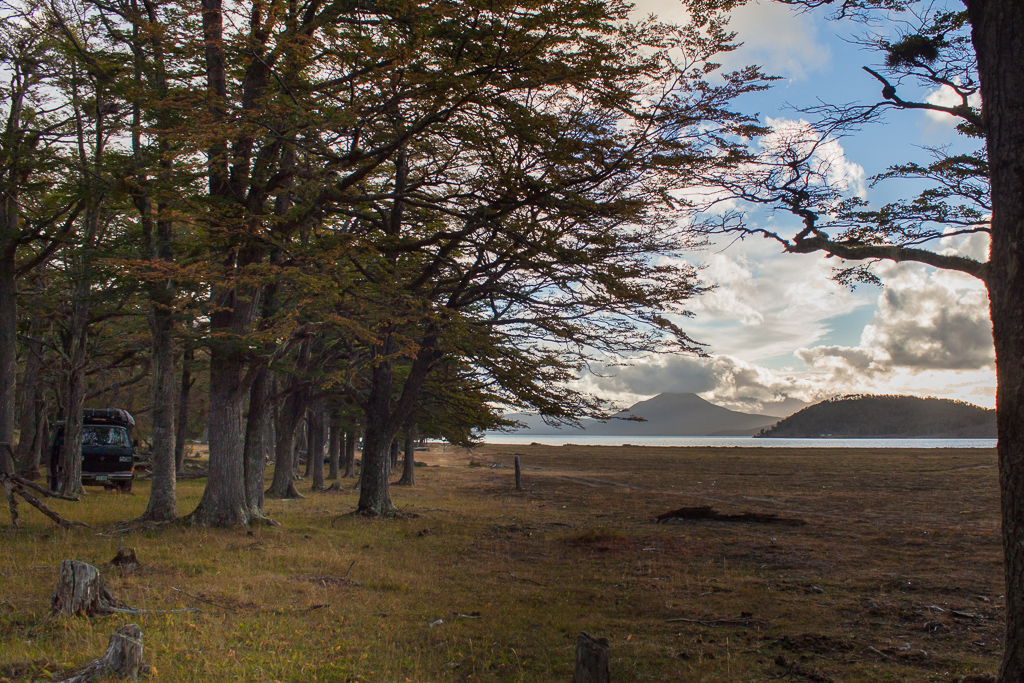



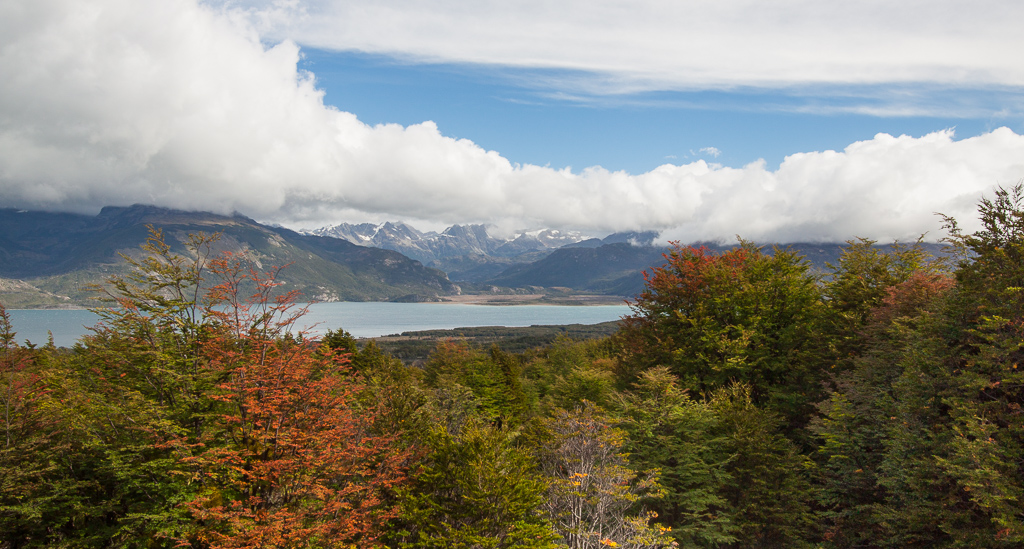
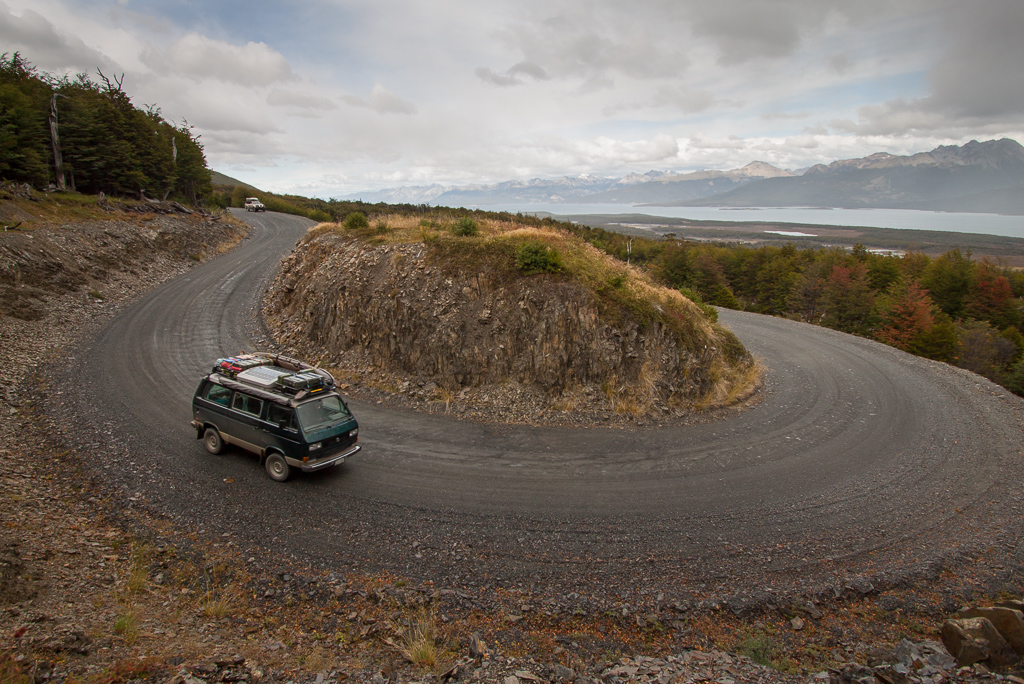
















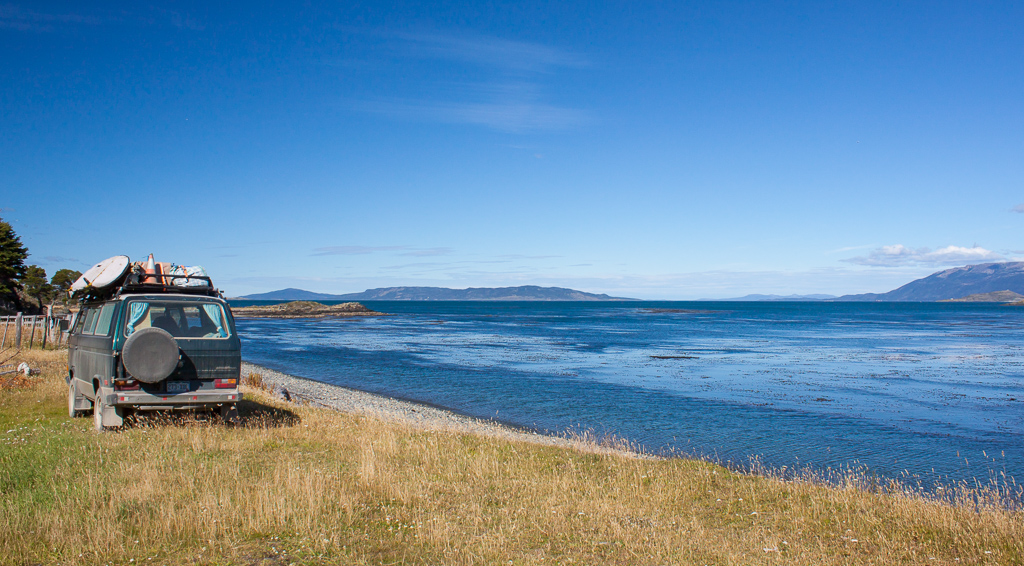



Woo hoo! What a story! What a world- you’ve shown us so much of it!
I can’t wait to see you upon your return, but I’ll understand if it takes you awhile to adjust to being home in Colorado.
Mom
Your story and photos are beautiful, thank you for sharing!
Thank you for reading!
well done! hope you continue exploring up the east coast of S Am.
Fantastic! What a wonderful document about a stupendous adventure. This is National Geographic quality material…Thank you for sharing this with those of us who so rarely leave our hometowns. Alida
Wow.. congrats on making it to the end of the road 🙂 All points north now… looks gorgeous..and cold!